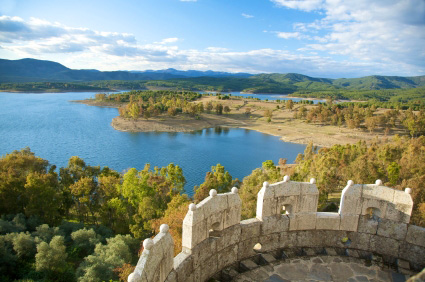
It became a World Heritage site in 1986, but the world is hardly aware it exists, compared to the attention it gives similarly historic, beautiful cities such as Toledo and Compostela. As you walk around these narrow streets which Renaissance palaces are squeezed into, you may begin to wonder if you are still in the 21st century, as the old part of the city has been almost untouched by the new. Caceres is a city well worth visiting not just for its history but also its cuisine. In 2015 it will substitute Vitoria as Spain Gastronomic capital.
So what does Cáceres taste of? If you had to respond to this question with a single answer you would say that Cáceres tastes of the richness of its land, since this is where the products that give an exceptional flavour to its dishes are born. Irrigated wheat fields, stretches of olive groves, orchards and forests with the best game meats are the only ingredients for a nutritional, flavoursome cuisine that is rich in calories.
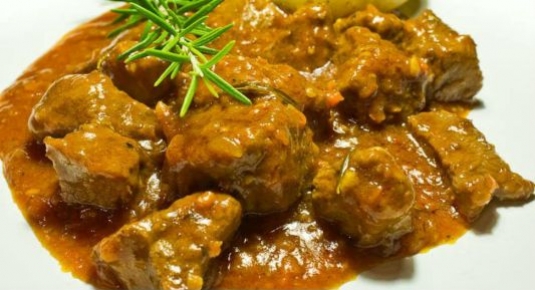 The province of Cáceres is home to one of the largest hunting areas in the country. As a result, the cuisine in Cáceres has an extensive range of recipes for cooking partridges and hares in particular, as well as pheasants and quails. The most popular game dishes are partridge soup and rice with rabbit.
The province of Cáceres is home to one of the largest hunting areas in the country. As a result, the cuisine in Cáceres has an extensive range of recipes for cooking partridges and hares in particular, as well as pheasants and quails. The most popular game dishes are partridge soup and rice with rabbit.
Lamb, beef and chicken are also the basis of the exquisite roasts from Extremadura, for which Cáceres is especially well-known. Other traditional dishes which are never missing from homes or restaurant menus are stewed lentils, cana soup (a bread soup which blends milk with paprika), Extremadura-style aubergines (cooked with lemon juice, parsley, salt and pepper), the tasty cocidos (chickpea-based stew) and pottages or Largarto (lizard), a curious stew which acquires its name from the colour of the thick green sauce which accompanies it, made of oil, parsley, flour and white wine.
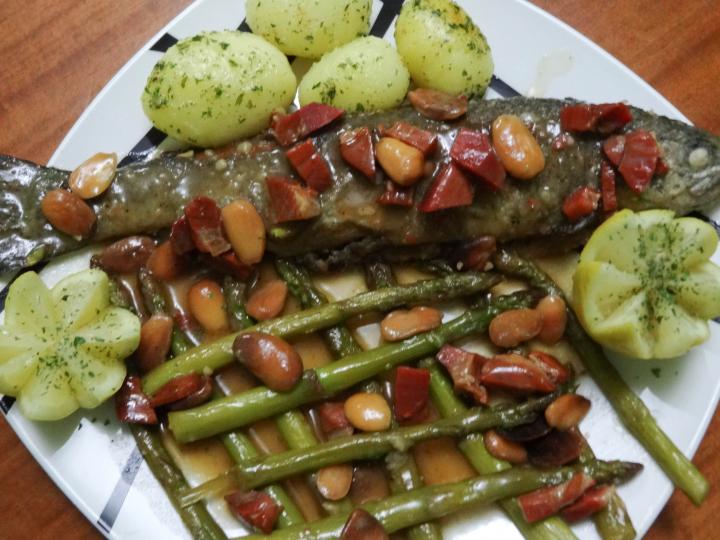
Although meat is the star ingredient, fish is also very popular in the kitchens of Cáceres. Cod, for which there are numerous recipes, and freshwater fish, especially Jerte trout, pike and tench are some of the most common fish in the area.
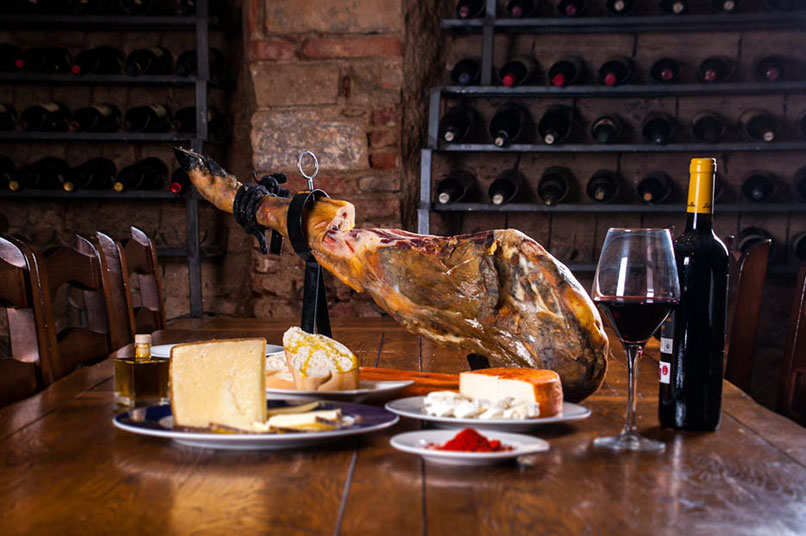
The abundance of sheep, cows, goats and pig farms turn this land into a paradise for meat and charcuterie lovers. The pigs are fattened with a natural diet of acorns, resulting in the extraordinary, world-famous Iberian hams. Other products here that can be tried here, especially if you go out for tapas, are the white chorizo, fresh black pudding and salchichón (cured pork sausage).
The numerous livestock farming activities in Cáceres not only provide high-quality meat but also an extensive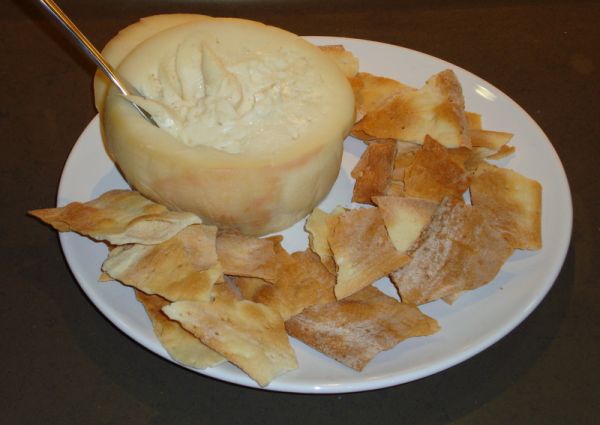 and tasty variety of cheeses, especially goat's cheeses. Torta del Casar is one of the most well known cheeses in Spain and rightly so and has become a symbol of quality. This special cheese is made with sheep's milk and undergoes a unique fermentation process which results in an original and exquisite cheese. According to tradition, this cheese must be opened at the top with a knife, as though you were removing a lid. Thanks to its creaminess, it is perfect for spreading on bread. Other high quality and very tasty cheeses include those from La Serena, Casar de Cáceres, La Vega and from the Extremadura mountains of La Vera and Los Ibores.
and tasty variety of cheeses, especially goat's cheeses. Torta del Casar is one of the most well known cheeses in Spain and rightly so and has become a symbol of quality. This special cheese is made with sheep's milk and undergoes a unique fermentation process which results in an original and exquisite cheese. According to tradition, this cheese must be opened at the top with a knife, as though you were removing a lid. Thanks to its creaminess, it is perfect for spreading on bread. Other high quality and very tasty cheeses include those from La Serena, Casar de Cáceres, La Vega and from the Extremadura mountains of La Vera and Los Ibores.
It might not be easy, but in Cáceres you must always leave room for dessert, especially if you have a sweet tooth. The most traditional desserts include huevecillos, a dough made with eggs, milk and breadcrumbs, which is eaten with a spoon; as well as perrunillas, an almond-based biscuit; repápalos, made with hard bread soaked in batter and then fried.
If you have the opportuity to spend a few days in Caceres or any other part of Extremadura you will not go away disappointed.